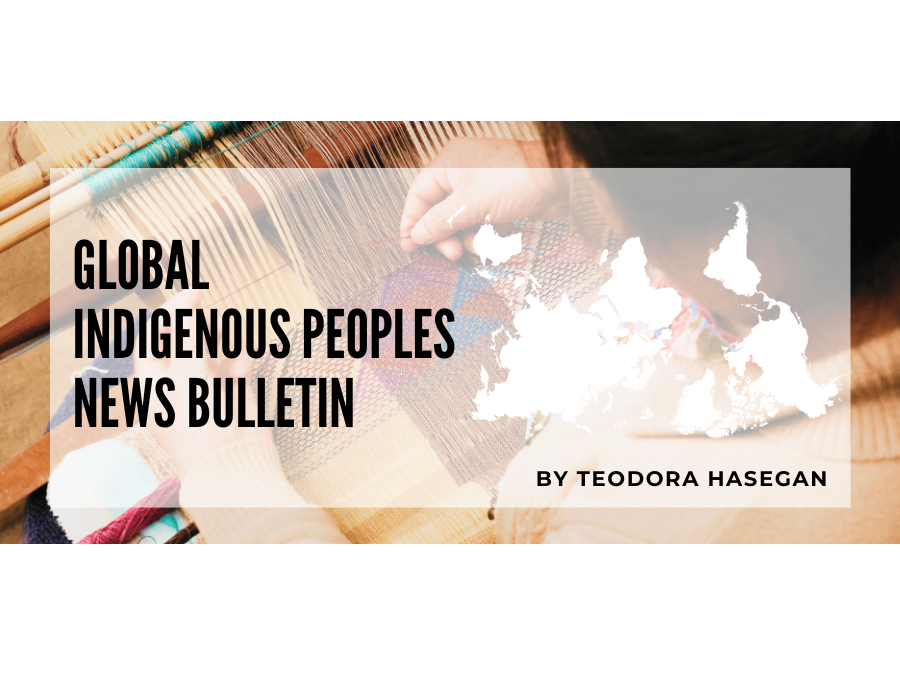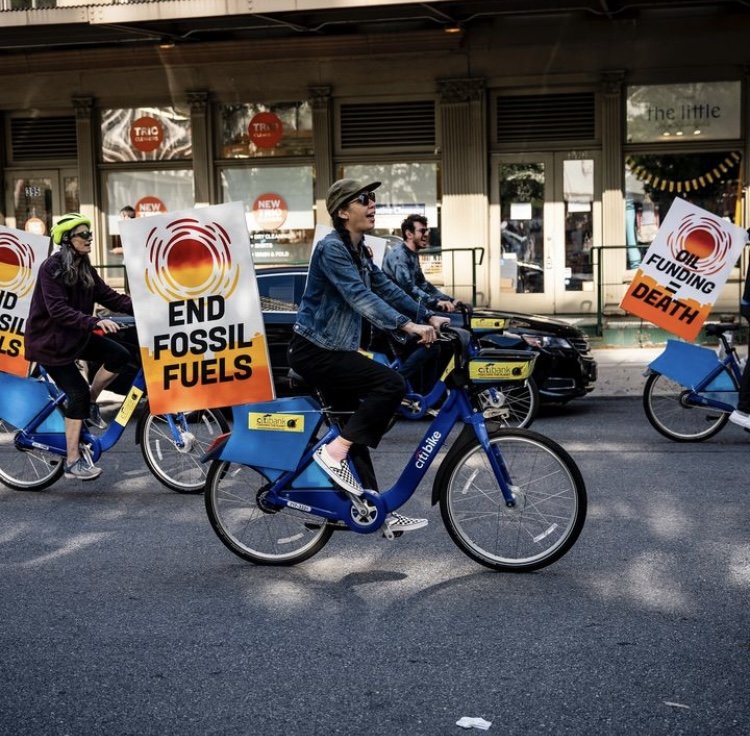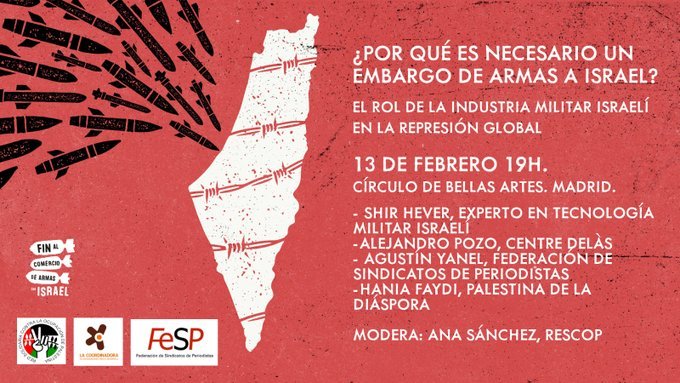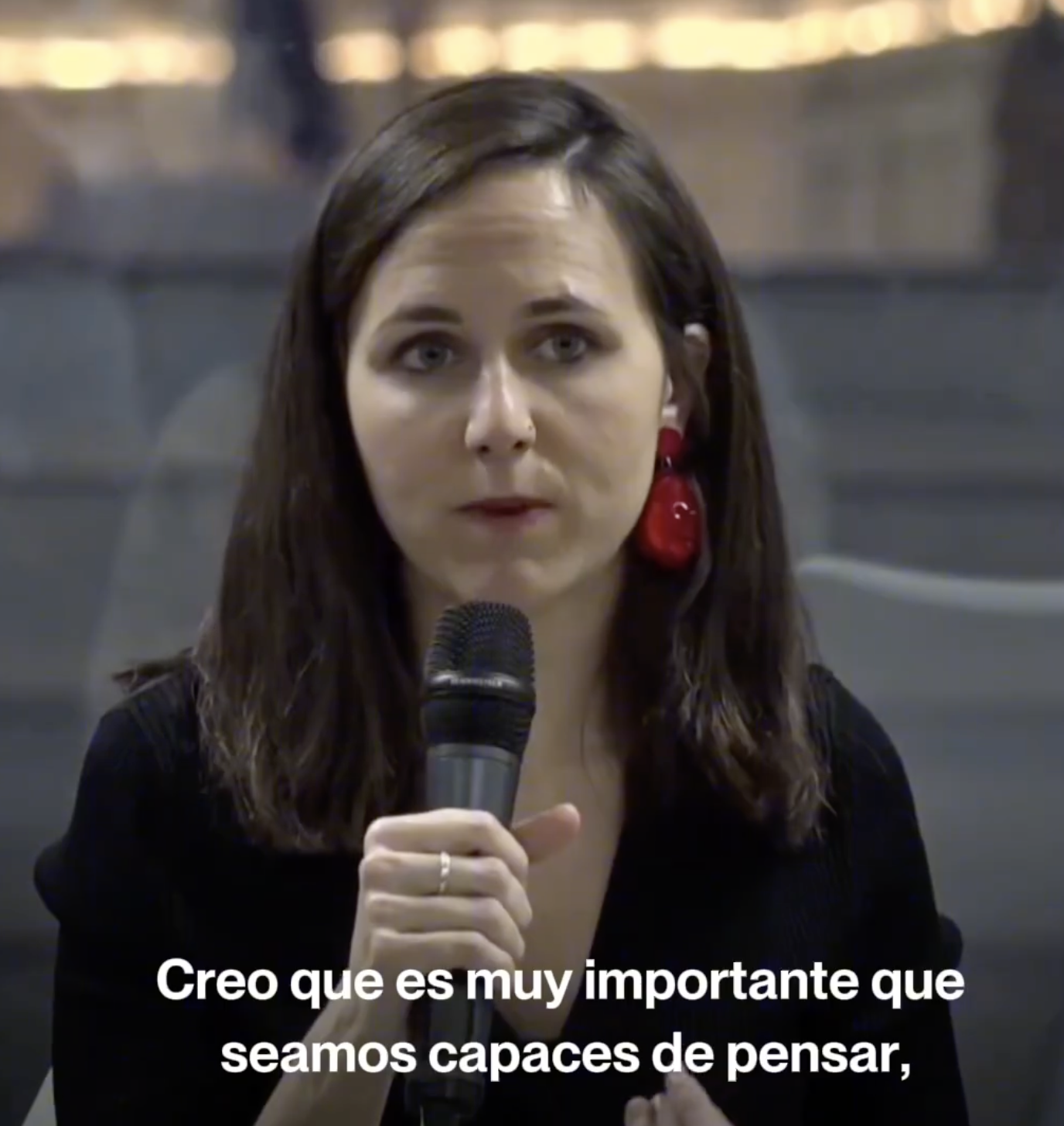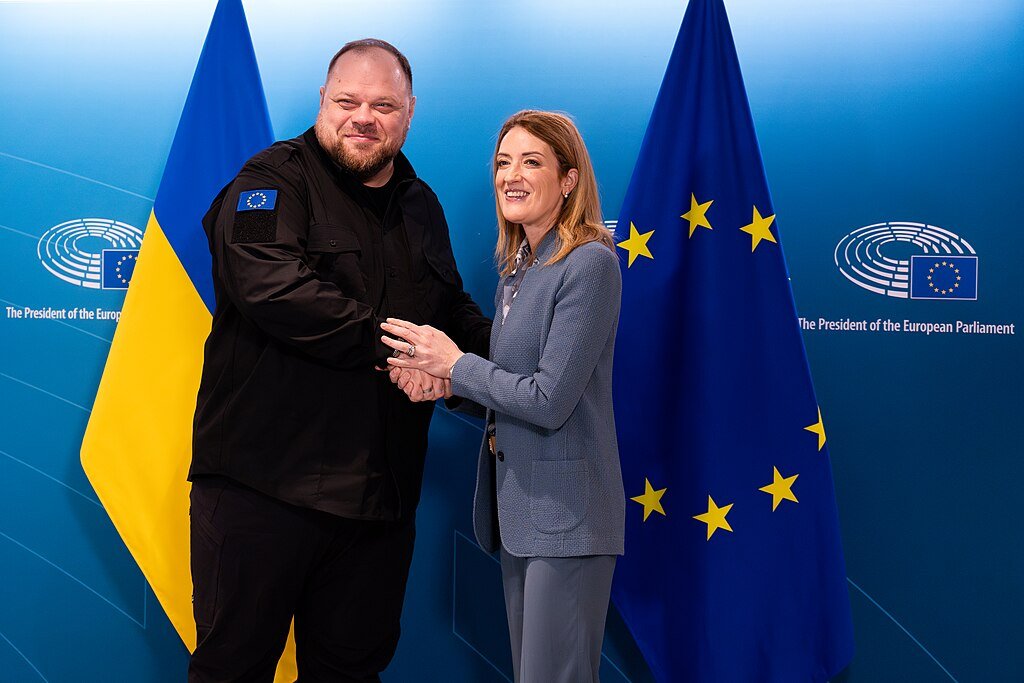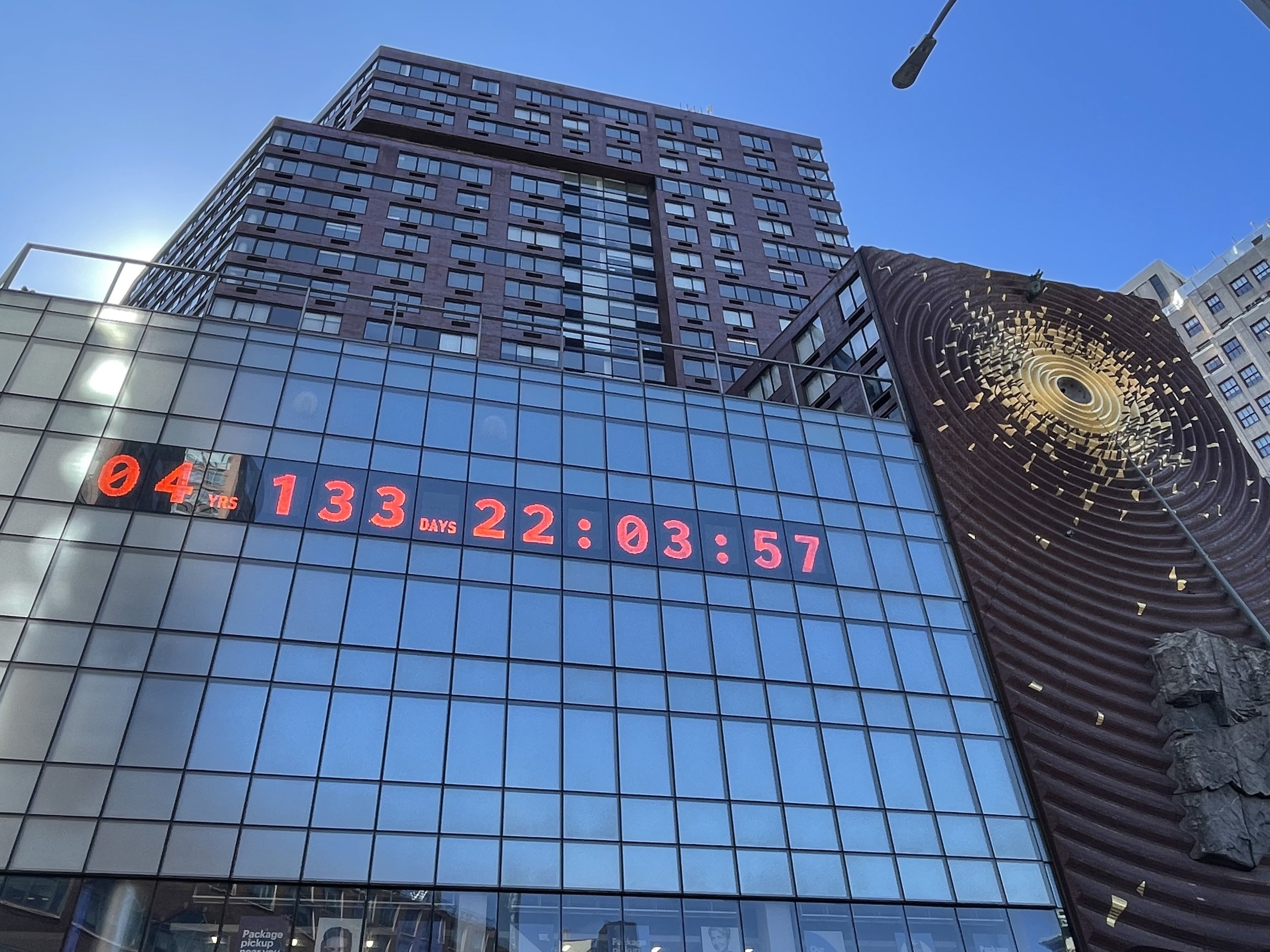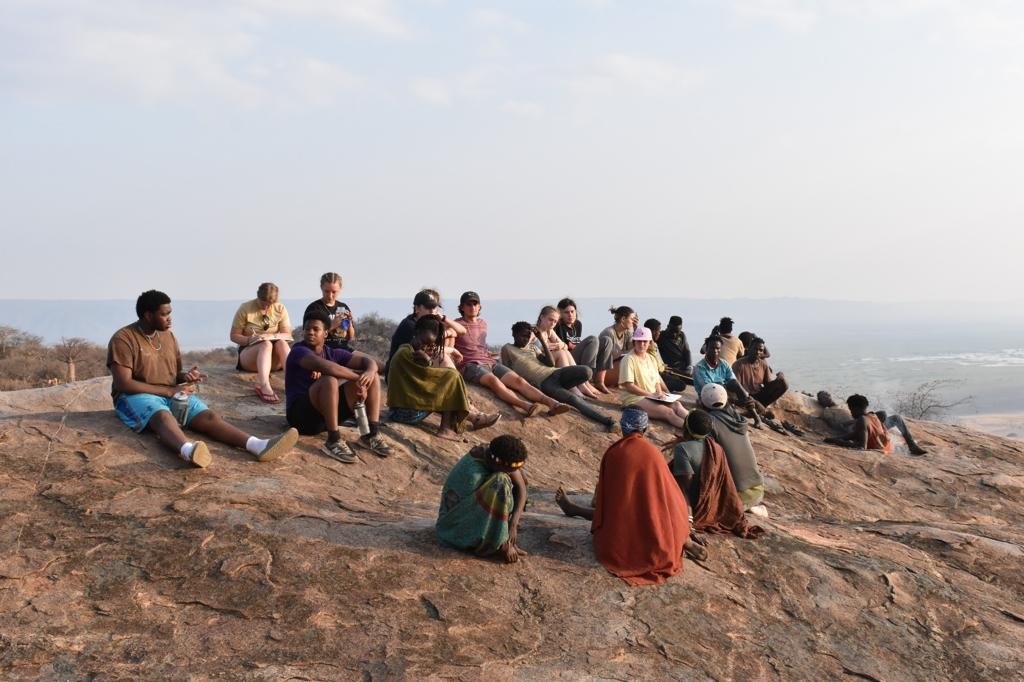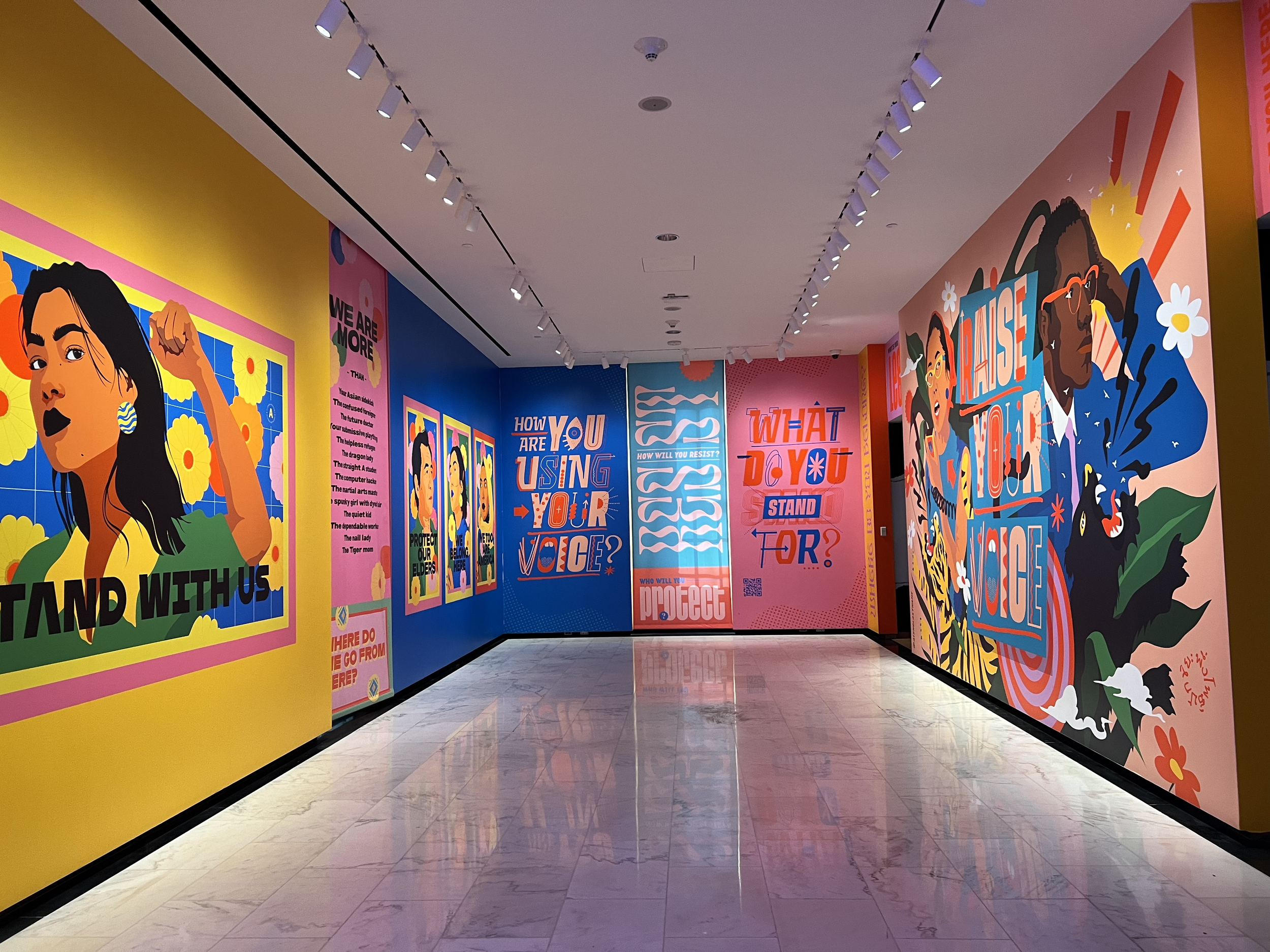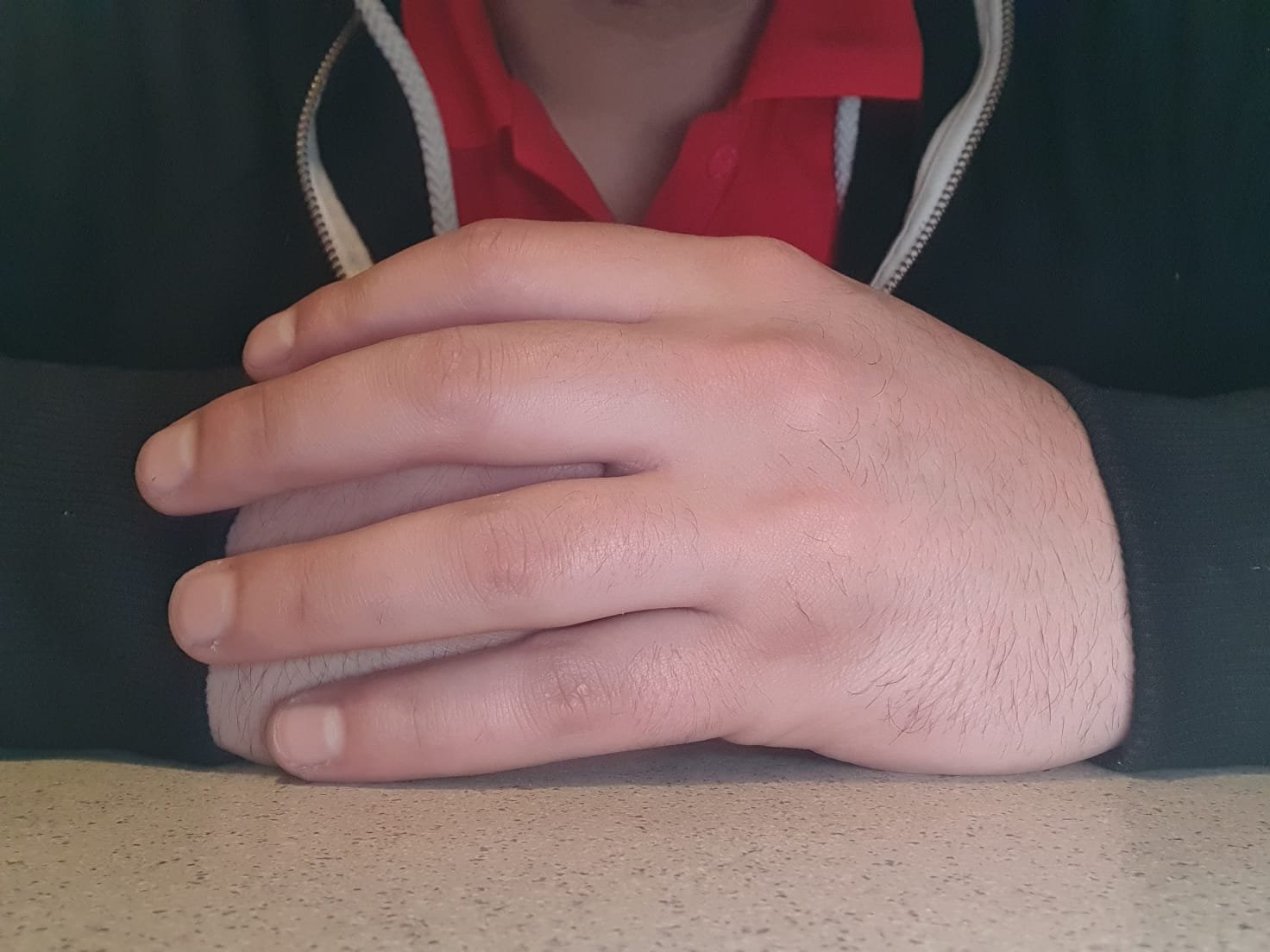
Stories
News

Analysis
Voices
Podcast
Announcements
Events
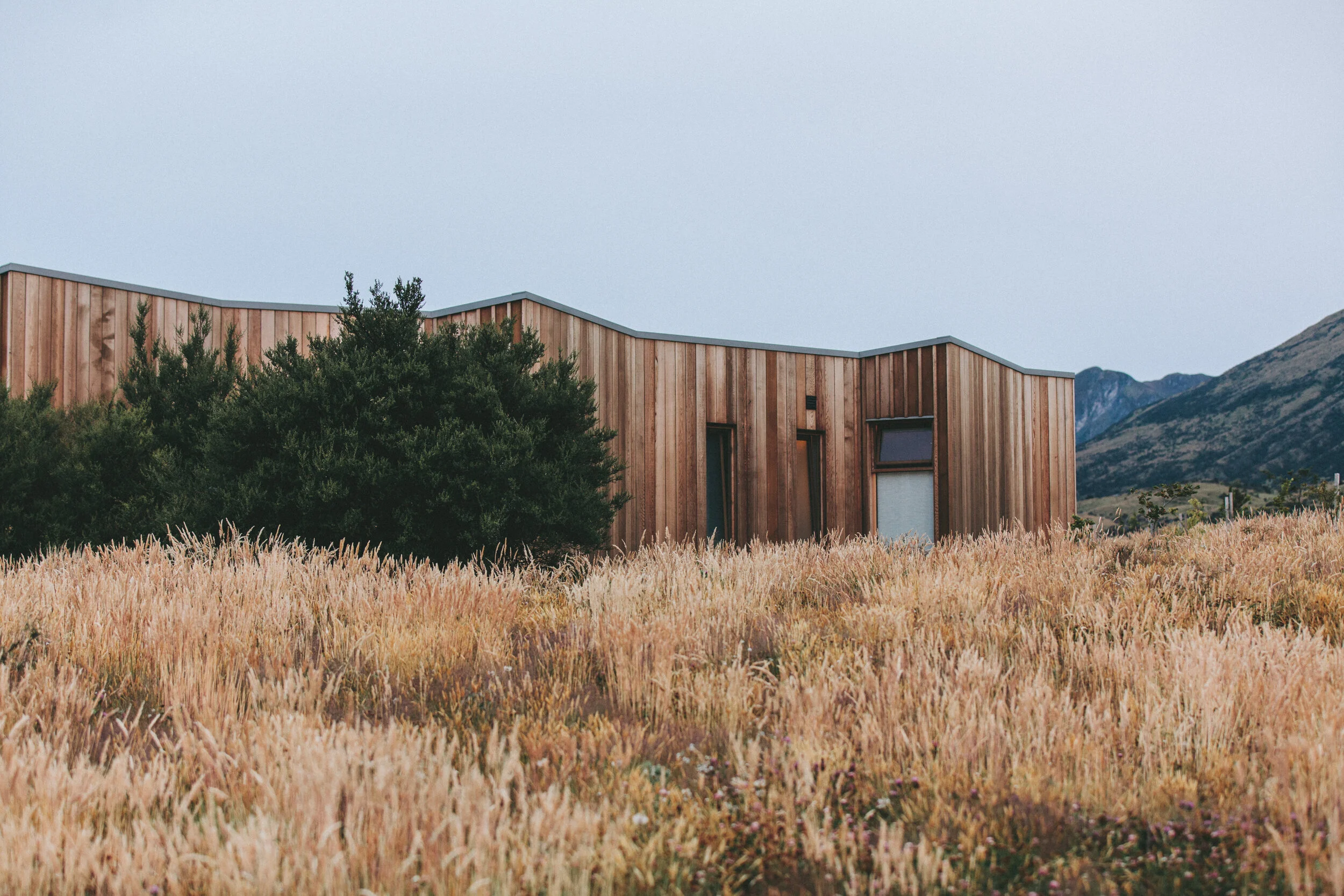
All Stories
Union Square’s Climate Clock: A Symbol of Climate Urgency Lost in Translation
It is a bright Saturday, the crisp air of late February stubbornly holding onto winter’s cold. Before me, Union Square Greenmarket unfolds in quiet rhythms. Usually a place of hurried crossings, the square now offers a reason to pause. Vendors line the pathways between sparse naked trees, nature reaching skyward as if trying to catch its breath amid the city’s steady hum. New Yorkers seem to find newfound fascination in sunflowers or a vintage teapot; it is a curious way of placing extraordinary importance on the seemingly unimportant. Amidst the hustle, something larger looms. A colossal clock, eighty feet wide, stands proud atop One Union Square South, overlooking the tranquil Union Square Park as its stark digital display counts down in red, pixelated numbers.
“El Arte No Es Delito”: Colombians Reclaim Their Voices on the Streets
Exploring a city as a tourist can be a vastly different experience from doing so as a local. Though I was born and raised in Neiva, Colombia, it was not until my foreign friend visited that I realized how the resistance against state violence and corruption is vividly illustrated in my hometown's public spaces, leaving no room to turn a blind eye. Her amazement at the art, phrases, and graffiti covering a small city like Neiva sparked a conversation about the country’s political landscape at the time.
The Streets That Turn Trash Into Treasure
Even a simple thing like taking a stroll around a Danish city can tell you about this country's deep commitment to combating climate change and supporting the welfare of its people. Copenhagen's approach to sustainability quickly stood out to me; even the smallest details on the streets—like the city’s trash bins—have a deeper meaning and purpose than what meets the eye.
Grab a Coffee and Meet Me At the Graveyard
One of the first places I visited during my semester in Copenhagen was not
only a beautiful park, but also a graveyard. Located in the heart of Nørrebro, this
multipurpose space—Assistens Kirkegård—is both a cemetery and a park. While the cemetery still serves its original purpose as a burial ground, it has evolved into a recreational space. For some locals, this is the area where they jog five kilometers every morning; for others, it is a place to meditate. For the busy bikers, this is the scenic street that they whizz down on their way to work in the city; and for the guides facilitating cemetery tours, this space is a source of income.
A Response to Forced Assimilation in the Hadzabe Tribe
My name is Fousani Hamidou, and I am a senior at St Lawrence University (Canton, NY, USA), majoring in Global Studies with a minor in African Studies. Last semester, I studied abroad in Kenya and had the opportunity to travel to Arusha, Tanzania, as a part of my program. We lived for a week alongside the Hadzabe tribe, one of the last surviving hunter-gathering tribes in the country. Throughout the week, we hunted hyraxes and made arrows with the Hadzabe men, and we gathered tubas (a tree root) and made beads with the Hadza women. On the last night, we all gathered with members of the tribe on a large rock by the camp to discuss their lifestyle, the Tanzanian government, education, and forced assimilation.
“The Human Tribe” from Naples to NYC
One of the most incredible aspects of street art is that it can take many forms and mean many things — from a small sticker pasted onto a trash can to graffiti found in a subway car to paste-ups adorning a fence. Being from Mexico, I have always felt strongly connected to murals and their powerful messages. Murals are big. Murals are vibrant. Murals are captivating. In this third installment, I am excited to share my journey of leaving New York City to start the second half of my off-campus year studying in Italy, and to share my experience with Jorit, an internationally known Italian urban artist.
Deconstructing Colonial Narratives in Spain
As I wheeled my luggage into the John F. Kennedy airport terminal in New York City, the air was filled with a symphony of sounds that blended the murmurs of conversations in different languages, the echoing announcements over the intercom, and the occasional distant rumble of airplane engines. My heart raced, erratic beats echoing in my chest as I waited for my plane to board. It was my first time traveling abroad as a first-generation Latina, and I was filled with excitement as I embarked on my journey to Spain. Prior to my departure, I knew that I wanted to learn more about decolonization, and I believed that Spain was the perfect place for this pursuit.
Malaga for Palestine: “The generations surge together in resistance to meet the reality of power”
I woke up this morning in Malaga with the knowledge that today was an important day in Spain: a day of nationwide demonstrations calling for an end to Israel’s genocidal assault on Gaza. At a time when European leaders continue to fail to meet their basic moral obligations vis-a-vis the Palestinian people, more than 70 Spanish cities from Alacant and Albacete to Zamora and Zaragoza were scheduled to host actions under the common banner of stopping the genocide, ending arms sales to Israel, and cutting off diplomatic relations with the apartheid state.
“Israel Kills, Europe Sponsors!”: Spaniards Mobilize for Palestine, Call Out EU Complicity
As the Israeli military continues to subject Palestinians in Gaza to a brutal siege accompanied by heavy aerial bombardment, citizens around the world are rising up to express their solidarity with Palestinians and to demand that Israel and its international supporters be held accountable. At a march held in the Spanish capital, Madrid, protesters sought to focus attention on the role of the European Union (EU) in enabling Israel’s war crimes.
“Make Art”: An Interview With Savior El Mundo
In my first Weaving the Streets installment, I described how my interest in street art was born as a child in Mexico, and I focused on the artist Amanda Phingbodhipakkiya and her installation “We are More” in New York City. I am very excited about this second article because I was lucky enough to interview a street artist myself and learn about street art in NYC and the community of street artists first-hand. For this article, I will be featuring Savior El Mundo, a street artist, but also a dancer, curator, and more, who shared with me his own journey as an artist born and raised in New York City.
Climate Justice Now! Spaniards Demand Decarbonization at Madrid March
“De norte al sur, de este al oeste, la lucha sigue, cueste lo que cueste! (From north to south, from east to west, the struggle continues, whatever it takes!)” With this and other slogans ringing in the air, hundreds of activists of all ages filled the streets of downtown Madrid, Spain, on September 15 to demand rapid decarbonization and climate justice. At a time when news reports here are filled with stories of floods, fires, and killer storms throughout the wider Mediterranean region, Madrid’s 15S Climate March provided a much-needed dose of what is usually missing from those reports: a clear-eyed look at the policy steps that must be taken in order to face down our climate crisis.
The Battle for Quinta Torre Arias: From Common Ground to Private Playground
Once a noble countryside estate, Quinta Torre Arias is now a public park in the Spanish capital, Madrid, with gardens that welcome the community. However, current Madrid mayor, José Luiz Martínez-Almeida of the People’s Party, has different plans for the park, and the threat of its return to privatization looms.
8M Demonstration in Madrid: Where Women’s Struggles Meet Workers’ Struggles
The color purple took over the main streets of Madrid. Thousands of women and allies holding up signs were waiting for the demonstration to begin. I have never seen so many people gathered together – people from all ages and backgrounds prepared for this rally to begin.
Incendiary Commentary: The Ninots of Las Fallas, Valencia
A fiery tradition in Valencia, Spain, called Las Fallas is held annually from March 1 to 19. Festivities happen throughout the day and night, including firework shows like the grandiose and explosive Nit del Foc on March 18, which uses between two to 4.5 tons of gunpowder, and parades such as La Ofrenda and Mascleta. On March 19, the burning of freestanding doll-like figures called ninots, La Cremà, makes the city a chaotic playground that reflects upon social and political realities of the day.
Gentrification and Resistance in Lavapiés
I was excited to learn more about this neighborhood and explore it myself. I come from a multicultural neighborhood in New York City, where my community is home to hundreds of immigrants. I was raised by immigrants myself, so I wondered if Lavapiés would remind me of home. However, the professor explained that there is a major problem occurring in Lavapiés: gentrification.
Lavapiés: The Perfect Place for Rebellion
Since January 2022, Spain, like much of Europe, has suffered a prolonged drought exacerbated by climate change. Luckily, activist groups such as Extinction Rebellion are paving the way for a revolution to fight the destruction caused by our inaction against climate change. Recently I came across some of Extinction Rebellion’s powerful visuals while walking through the Lavapiés neighborhood in the Spanish capital, Madrid.
“We are More”: Public Art With a Purpose
“Phingbodhipakkiya’s art encourages you to stop and reflect. The public nature of her eye-catching work encouraged me, and likely thousands of others walking down the crowded NYC streets, to consider individual and collective attitudes towards specific societal groups. It calls out double standards when it comes to appropriating a culture instead of appreciating it.”
His Journey: From Syria to Denmark and Uncertainty
Ahmed Ibrahim, a 24-year-old man from northern Syria, arrived in Denmark in August of 2017 during the Syrian Civil War. His experience as a refugee, his perseverance, and his willingness to tell his story are true signs of resilience.
Migration in Denmark: Context and Current Debates
In her first article for our Weaving the Streets series, Janeil Speid reports on the complicated history and current reality of immigration in Denmark, where the country’s liberal image sits uneasily with a reality of hostility toward some of the country’s newest immigrants.
Why Do People Do Graffiti?
According to Art Journal, “there are many possible purposes for graffiti: it can be to tell a story, highlight a certain moment in time where things went wrong or right, describe people, politics, culture, art, places and society together; express yourself anonymously, or just be another art form.” However, that is only a partial answer. The actual reason why people do graffiti is much more complex and involves learning a bit of history —making it impossible to summarize in one sentence.

